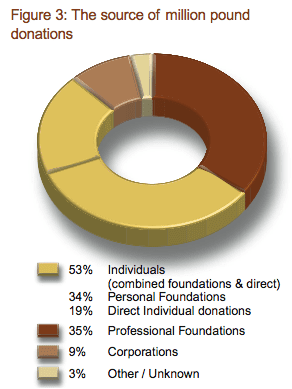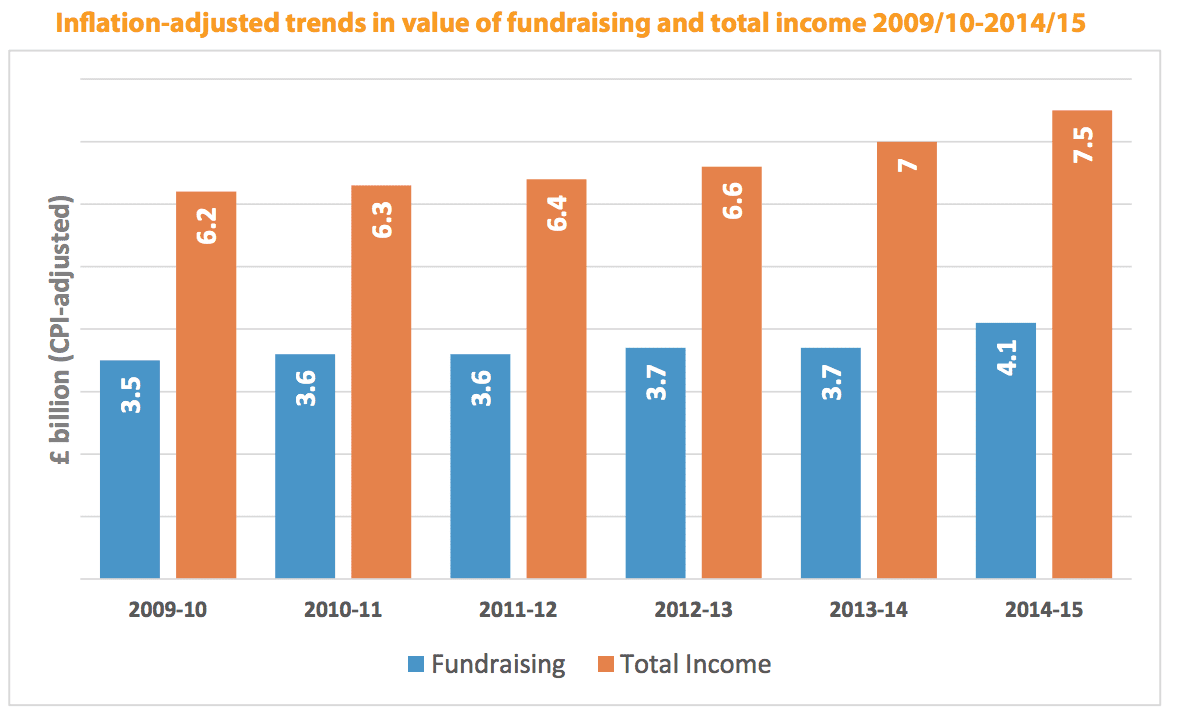What will elite givers do in the downturn?
The Independent has recently published a list of Britain's 30 leading philanthropists*.
Headed up by Sir Tom Hunter (who made much of his fortune from his sports shops, Sports Division, which he sold to JJB Sports in the 1990's) with an estimated wealth of over £1 billion, the list includes a whole host of well known (and not so well known) names. All but one of the top thirty gave away £1 million and, as we saw in the Coutts Million Pound Donors Report, there was a tendency for support to be given to specific sectors – youth (including higher education institutions), housing, health and international development.

There aren't many people or institutions who can afford to give away such large chunks of cash. The 2008 Sunday Times Rich List identified 71 UK based billionaires and estimates indicate that there were (before the banking crisis) perhaps another 120,000 people in the UK who have £1 million or more in disposable wealth. But with the recent movement of the stock market this number has almost certainly shrunk.
When it comes to institutions, less than 300 of the 8,800 charitable trusts and foundations in the UK have assets worth £10 million or more and few companies give away such significant sums.
But even so, in 2006/07, 193 gifts were made of £1 million pounds and over and they had a combined value of £1.6 billion. If we remove those given to educational institutions, the amount given comes to over £1.3 billion. Take into account the fact that the total income of general charities in that year was £31 billion (which also includes government grants and contracts, trading and investments) and you can quickly calculate that, in this one year, almost 5% of all charitable income in the UK was given by less than 200 people.
So what are these elite givers thinking of doing in the current economic downturn?
A study by Philanthropy UK indicates that some of them might just be saddling up their white chargers and getting ready to come to the aid of the sector.
As their study points out, not all of the £1.6 billion given in 2006/07 was actually spent. Over half (56%) was actually banked in trusts and foundations and is still available for distribution.
They also found that pledged gifts remain firm, failing to find any evidence of pledges being rescinded (though some have been renegotiated to allow payment over a longer period of time).
And perhaps most importantly, they uncovered the fact that those people and institutions that have the means recognise that this is the time when charities will really need their support. As The Director of The Wates Foundation explains “As a grant-maker, the trustees believe that we have a responsibility to continue to support the sector with new awards at a time when the average charity is most likely to be hit by reduction in income.”
A London-based philanthropist broadly agrees, telling Philanthropy UK, “I have commitments which I intend to honour, especially when there is even greater need in these difficult times.”
Philanthropist Dame Stephanie Shirley also takes this approach, “We will maintain our grant giving, even if this means eating into our foundation’s capital. All our planned expenditure (on the scale of last year’s £1.25m) is held in cash.”
Doug Miller, founding trustee of the European Venture Philanthropy Association<, added, “My giving will not change as I have long-term strategic goals and set aside funds to achieve those goals during the bubble. My investments in philanthropy have increasingly become strategic, looking at ways to leverage my involvement and to affect the dynamics of the whole sector.”
And, at a time when many people are re-evaluating priorities, David Gold, chairman of A Glimmer of Hope UK foundation< and of the Philanthropy UK advisory board, argues for taking a holistic approach to portfolio management: “At a time when people are looking at their investment portfolios, maybe they can take the time to revaluate their position. Paper wealth was created at speed and lost at a faster rate. Investing in charities would have yielded a higher social return and an improvement in human capital... and it may have been fun too!”
As the ongoing Bluefrog research has found amongst mid-value donors, consolidation is also a growing issue amongst elite givers.
Lyn Shears<, a philanthropist focusing on local causes in the Northeast, explained, “As we will have less income from our endowment, and are already committed to a number of three-year grants, we are less likely to take on new pledges and commitments.”
Sheetal Mehta, co-founder of Shivia Microfinance<, responded, “We will be more focused on the projects we work with and go deeper into the specific deals rather than try to work on the surface with many organisations.”
This does not mean, that there is no hope for those charities that do not already have a relationship. With a changing economic climate, different causes will come to the fore.
Alan Hodson, a director of The Funding Network<, said, “I may be more likely to give to UK charities as the recession is creating even more need, and I’m keen to encourage individuals or groups who are showing commitment to resolve issues within our local communities.”
Steven Dawson, founding chairman of venture philanthropy Impetus Trust<, adds to this point, “Charities dealing with poverty in all its forms will need more resources in a downturn. There is also increasing concern about the lack of progress on social mobility. This may even get worse as unemployment rises, leading to increased risk of social unrest. It is important for donors to at least maintain their giving to combat these trends.”
Another venture philanthropist summarised, “The economic downturn is likely to affect my giving in complex ways. This could involve focusing my support more, exploring avenues that help disadvantaged communities weather the global downturn, and expecting charities I support to deliver their work more cost effectively and creatively.”
Donors, no matter what level they give at, have their own specific needs. And the more we do to understand what they want to achieve and actively help them reach their goals, the more successful we will be.
And in putting together a plan, it might not be a bad idea to refer to Ken Burnett on this matter. His ten commandments seem to me to set out a very sensible approach to keeping fundraising – at all levels – on target.
*Britain's list of leading philanthropists was compiled using nominations from charities and philanthropic organisations, including – Philanthropy UK, The Community Foundations Network and the Institute of Philanthropy.
Update: For a view on US elite giving take a look at the year end review from The Chronicle of Philanthropy
Update 2: Sir Tom Hunter says that his pledge to give away £1 billion might have to wait.
Tags In
The Essentials

Crack the Code to Regular Giving: Insights, Strategies, and a Special Giveaway!

‘Tis Halloween. Keep to the light and beware the Four Fundraisers of the Apocalypse!

Why do people give? The Donor Participation Project with Louis Diez.

A guide to fundraising on the back of a postcard

What does the latest research tell us about the state of fundraising?






